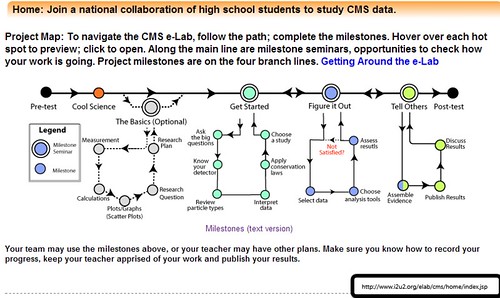At NDQC, there are two projects concerning the CMS collaboration at the LHC: CMS Upgrade and CMS Data. Both of those projects have enjoyed a long fifteen year relationship with the CMS.
In an earlier blog I posted about one side of the relationship that NDQC has with CMS which is the manufacture of parts for the detector. The other side of that relationship is the connection with the CMS Data team at NDQC. Students and teachers have received data from the CMS collaboration for as long as the CMS Upgrade has built parts for it. They take the real data and make real scientific observations that could have real impact in the scientific world.
The Data group takes the data it receives and analyzes it using programs such as MATLAB. Students in this group have used the CMS e-Lab feature in the past to analyze data and learn about it as well. A screenshot of the e-Lab is below. The e-Lab walks a student through the scientific method to collect data and specifically CMS data.
Just this week for example, the current group of students received one hundred thousand dielectron events from CMS. These events have only been viewed by the people who actually put them together. Other than that, the students and teachers at NDQC were the first people to ever lay their eyes on these data pieces and make observations.
Already, the students have made a few observations on the dielectron data as seen by the graph below. For example, the graph identifies certain particles like the Z boson (about 91 GeV) by peaks in the graph. Through this strong relationship with the CMS collaboration, hopefully future students can be able to make observations and collect data as well.



